General manager Chuck Fletcher has done little to warrant complaint so far. Last week, he made the most significant move of his new Philadelphia Flyers tenure by bringing in veteran coach Alain Vigneault.
But Fletcher’s facing a number of tests that he’ll have to pass before the notoriously bitter Philadelphia fanbase learns to truly trust him as a hungry franchise seems poised to hit the trade wires and free agent market to drag itself back to relevancy. And before he can dive into those waters he’ll have to re-sign a few of the talents already on the team.
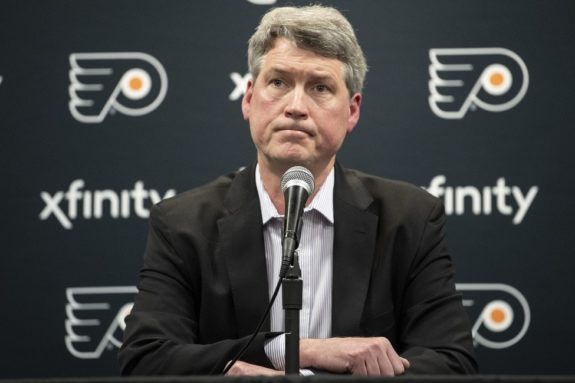
For all of his faults, former Flyers GM Ron Hextall had a remarkable record for getting restricted free agents to sign long-term contracts at bridge deal prices. Defenseman Shayne Gostisbehere is signed for just $4.5 million until the end of 2022-23 season, while the even more valuable Sean Couturier is paid even less until the end of the 2021-22 season. Both of those deals ran five years or longer when the ink dried.
Fletcher will need to find some of that flourish if he wants to shape the Flyers roster he inherited into a deep, cohesive team in the long-term. Flyers fans will learn a lot about Fletcher’s appreciation for certain players, and his commitment to certain positions, with three major RFAs (and a few others) to ink this offseason.
Ivan Provorov’s Next Contract
Provorov, the team’s 22-year-old de facto #1 defenseman, has shown equal parts brilliance and inconsistency in his young NHL career. Fletcher will have to tread lightly, finding an agreeable balance between paying for reputation and potential with Provorov’s actual current on-ice contributions. Provorov still has all the tools to be a high-end top pairing defenseman, but it might be unwise to pay him long-term as if he was one.
As much as fans and analysts want to anoint players based on their best games or stretches, general managers must assess the cumulative quality of an athlete’s play. Provorov was streaky defensively in 2017-18, despite tying for the league-lead in goals by NHL defensemen. For most of this past season, which Fletcher was only part of for five months, the young defender continued to be uneven, turning the puck over too often for anyone’s liking and logging his worst statistical season to date.
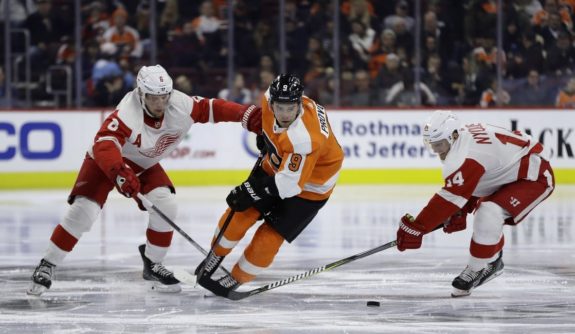
Provorov, at the moment, is a player who it might be better to look short-term with. You’d like to see him develop into what he can be, but you don’t want to pay him for that before the inconsistency melts away. Fans, and probably the player himself, might be itching for a long-term, high-dollar deal, but three years at a show-me price near $6 million per would likely be ideal.
Extending Travis Sanheim
Sanheim bounced between the AHL and NHL in 2017-18 and wallowed deep in the lineup until previous coach Dave Hakstol was fired. Under interim coach Scott Gordon, Sanheim was lofted onto the first pairing and finished extremely strong, racking up 22 points over the season’s final 37 games while averaging nearly 22 minutes every night.
Unlike Provorov, Sanheim didn’t show much inconsistency in the streak he spent at the top of the lineup. He was sent down in the preceding season for a rash of mental mistakes that seem to have evaporated, and he only got better the more he was on the ice throughout the season.
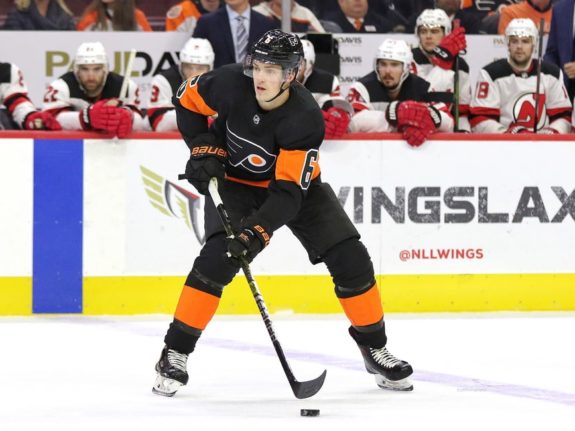
The sample size, on one hand, is small—but that might actually be of benefit. As Hextall demonstrated with Gostisbehere, it’s possible to get players to sign for term after just two seasons. Sanheim doesn’t have the track record to demand a colossal figure, but he does have the toolbox and enough glimmers that a longer deal might be possible at a decent figure and low risk. Six or more years in the neighborhood of $5 to $5.5 million could turn into a major steal—and if anything unfortunate happens with Sanheim’s development, it’s not too ludicrous of a price to be unmovable.
Evaluating Travis Konecny
Konecny might be the most difficult of the RFAs to price. His skillset is pretty well known: he’s fast, smart, feisty, and has a pretty good shot. He’s put up 20 or more even strength goals in each of his last two seasons, bouncing around the lineup and finding success alongside Claude Giroux when he’s been there.
Though he’s incredibly streaky, and even beside Giroux, he sometimes goes cold: in those two campaigns he’s had four stretches where he’s gone goalless in eight or more games, eclipsing 12 twice. And it’s not as if he’s racking up points elsewhere during those runs: he’s accumulated just 12 assists in those 46 total games.
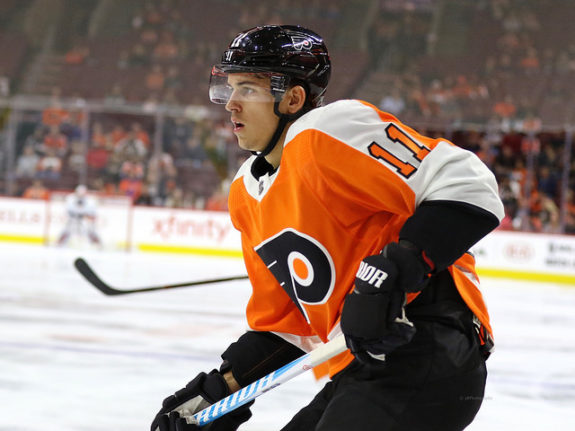
Konecny’s talents speak for themselves, and he does bring spark even when pucks aren’t going into the net. You can never have too much speed on the roster, anyway, and Konecny has that in spades. As with Sanheim, it might be opportunistic of Fletcher to seize on the moment and look to go long-term—say, five years—in the $4.5 million range. There are plenty of forwards making $5 million who bring less statistically than the 49 points Konecny tallied last season and who possess none of the bratty swagger that makes him a burgeoning fan favorite.
Other Flyers Restricted Free Agents
The Flyers do have a handful of other, less significant RFAs to re-sign before the start of next season.
Scott Laughton, a model fourth liner often asked to play too high in the lineup, should earn at least a modest doubling of his sub-$1 million salary for a couple of seasons. He’s a gritty, capable player who can slot at center or wing and provide some buzz on the forecheck.
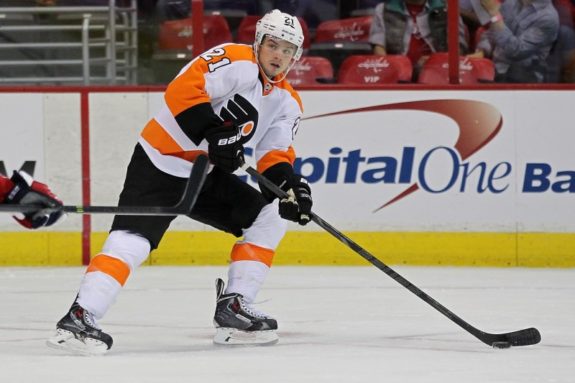
Ryan Hartman, acquired in the Wayne Simmonds trade, is an interesting case: he’s got a surprising 20-goal season on his resume already, but is hard to imagine as anything other than a high-energy, physical third liner at best (but likely riding beside Laughton on the fourth barring any injuries above). The team should look to audition him for a full season before committing anything too substantial, so his contract probably should be a short one for $1.5 million if possible—nothing over two years or $2 million.
Minor leaguers Justin Bailey and Nicolas Aube-Kubel are both quick, young, and suited to call-up status. Both should be resigned to two-way contracts to keep some decent injury fill-in options, with just a hint of upside, on the Lehigh Valley Phantoms roster.
Fletcher’s Next Big Test
The Flyers do have some pieces to bring in from outside the organization still. In his post-mortem press conference, Fletcher hinted at a desire to bring in some veteran talent for the blue line and some depth at center to slot in between the Couturier line and the Nolan Patrick one. Before he can start spending on outside players, though, Fletcher will have to lock up his restricted free agents and set his budget from there. In doing so, he’ll give Flyers fans their first full glimpse of his abilities as a talent evaluator—and a negotiator.